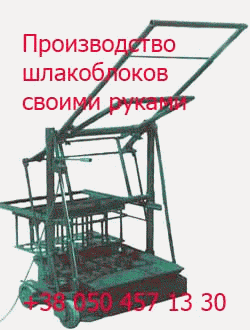The typical base monomer of this adhesive group is methyl methacrylate (MMA). This has a very good wetting behavior and easily ‘etches’ plastic materials, thus allowing excellent diffusion bonding. MMA is also capable of wetting metals and glass. MMA homopolymers have outstanding mechanical properties and are highly durable; however, in order to reduce the brittleness […]
Архивы рубрики ‘Adhesive Bonding’
Monomers
 21 сентября, 2015
21 сентября, 2015  Pokraskin
Pokraskin For one-part, two-part and anaerobic adhesives, mostly methacrylates are used, while UV-setting adhesives are mainly based on acrylates. UV-setting adhesives are required to cure very rapidly, whereas one-part and two-part systems are often employed as high-performance systems the mechanical properties of which are considered to be more important than the curing rate. The monomers are […]
Chemically Setting Acrylates
 20 сентября, 2015
20 сентября, 2015  Pokraskin
Pokraskin Reactive acrylate and methacrylate adhesives are solvent-free 100% polymer systems that comprise one-part and two-part systems, as well as anaerobic and UV-setting adhesives. Reactive acrylate/methacrylate systems differ from physically setting acrylates/methacrylates by their curing mechanism, although they have a similar chemical base. Acrylates and methacrylates are monomers or prepolymers with vinyl group-containing double bonds; these […]
Acrylate-Based Contact Adhesives
 19 сентября, 2015
19 сентября, 2015  Pokraskin
Pokraskin Acrylate-based contact adhesives make it possible to obtain bond-lines of relatively high strength within a very short period of time after application, subsequent drying and joining under pressure. These adhesives are available as either solvent-containing systems or dispersions. Traditionally, chloroprene or butadiene-acrylonitrile rubber is used, but acrylate homopolymers and copolymers are also employed, for example […]
Dispersion Acrylates
 18 сентября, 2015
18 сентября, 2015  Pokraskin
Pokraskin In the wake of growing ecological awareness, low-solvent or solvent-free adhesive systems are rapidly gaining importance. Acrylate dispersions can be adjusted to the majority of applications owing to the wide range of raw materials available. They have an excellent age resistance and a reduced tendency towards yellowing, and can also be used as PSAs for […]
Acrylate Adhesives
 18 сентября, 2015
18 сентября, 2015  Pokraskin
Pokraskin 5.7.1 Physically Setting Acrylates 5.7.1.1 Solvent-Containing Acrylates The primary solvent-containing acrylate adhesives used are thermoplastic methyl methacrylate copolymers dissolved in common organic solvents. The adhesives reach their final strength as soon as the solvent has evaporated or migrated into the substrate. Solvent-containing acrylates are mainly used for the bonding of paper or paperboard and for […]
Formulations of Polyurethane Adhesives
 17 сентября, 2015
17 сентября, 2015  Pokraskin
Pokraskin The properties of polyurethane adhesives depend on the isocyanates, polyols and chain extenders used (these may be short-chain amines or alcohols). Primary TID was used as an isocyanate source for many years, but was later found (due to its high volatility) to cause allergic reactions. To overcome this problem, oligomers with TID end-caps were made […]
Two-Part Polyurethane Adhesives
 17 сентября, 2015
17 сентября, 2015  Pokraskin
Pokraskin Unlike one-part polyurethane adhesives, two-part systems are composed of low — molecular-weight polyisocyanates or prepolymers cured with low-molecular-weight polyols or polyamines. They are used in car manufacture for bonding metals with plastics, for textile foam coatings, and for the bonding of PVC foils to wood in the furniture-making industry. 5.6.4
One-Part Polyurethane Adhesives
 16 сентября, 2015
16 сентября, 2015  Pokraskin
Pokraskin Within the prepolymer structure of moisture-setting polyurethane adhesives, there are still isocyanates. These polyurethane adhesives react with the ambient moisture according to the equation shown in Figure 5.20; polyureas or biurets are generated by crosslinking. Moisture-curing polyurethanes are used in the furniture-making industry, in the manufacture of motor homes, and as glazing adhesives in car […]
Structure and Properties of Polyurethane Adhesives
 16 сентября, 2015
16 сентября, 2015  Pokraskin
Pokraskin A distinctive feature of the polymer structure of polyurethane adhesives is the presence of hard and soft segments. Soft segments formed by long-chain polyether polyols have a low Tg; at room temperature they are in the entropy-elastic dispersion range. Hard segments are created by the crosslinking of diisocyanates with short-chain diols or diamines. Hard segments […]
 Опубликовано в рубрике
Опубликовано в рубрике 
